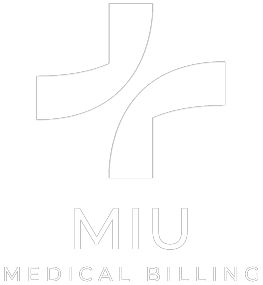Introduction:
Medical billing is the cornerstone of the healthcare revenue cycle. It utilizes equipment such as ERA, EOB, EFT, and other evaluations. Familiarity with these terms enables healthcare providers to reduce the time spent on billing worries and work on ensuring they receive their payments on time while satisfying the patients. This blog will elaborate on all of these and their implications for medical billing.
What Does ERA Stand for in Billing?

ERA is the acronym for Electronic Remittance Advice in the medical billing context. It is the electronic equivalent of remittance advice or RA, a communication insurance company has with other healthcare entities regarding payments, adjustments, and claims denials. Although paper-based RAs are primarily used as a reimbursement guide, ERAs are adjudicated more quickly and reimbursed directly, which leads to faster provider reconciliation.
What is ERA in Medical Billing?
ERA enables providers to get electronic payment information for medical billing claims. It includes the following information:
• Claims that were paid or denied
• Payer made adjustments
• Responsibility of patients
The application of ERAs has drastically cut down the amount of work done, improved efficiency and made payment reconciliations faster for practices to be able to achieve a good revenue cycle.
ERA and EOB Differences in Medical Billing
ERA and EOB present data on insurance payments, which serve different functions:
- ERA (Electronic Remittance Advice): Sent electronically to providers, ERAs are created in a format that can be easily imported to billing software for claim verification.
- EOB (Explanation of Benefits): Given to patients often in paper copy to explain how the insurance benefits were used for the rendered services.
The differences between ERA and EOB in medical billing are derived from the audiences they have, and usage with EOA facilitates the provider’s flow, whereas EOB aids the patient’s comprehension.
EOB in Medical Billing

EOB is an abbreviation of Explanation of Benefits. It is an announcement delivered by the insurance companies to the patient and provider, which outlines the following: It is suggested.
- Services that the provider billed
- Coverage and payments of the insurance
- The financial responsibilities of the patients
Explanation of Benefits is a disclosure document for the patient, but it is still not in the standardized format that electronic remittance advice providers require for efficient claim reconciliation.
EFT in Medical Billing

Electronic Funds Transfer (EFT) is a cycle for transferring funds electronically from payer to provider in healthcare. EFT’s elimination of checks, and with it, provides the ability for a confirmation of receipt to make bank payments or settlements all occur more rapidly and safely. It includes details such as:
- Faster and better cash flow for the providers
- Reduced costs linked with the paper-based transaction
- Integration with ERA for seamless claim/reconciliation of payments.
If a healthcare professional combines EFT with ERA, an effective billing stream is established that minimizes errors and ultimately eliminates late payments.
FAQs
Can I use ERA, EOB, and EFT together?
Yes, ERA, EOB, and EFT complement each other to improve the billing and payment flow. EFT provides rapid settlements, ERA automates reconciliation, and EOB keeps patients informed of what they are expected to do.
How can EFT benefit my practice?
With EFT in medical billing, payment can be made more quickly and securely to your account, thereby minimizing administrative workload and enhancing the flow of cash.
How can healthcare workers benefit from ERA over paper remittance?
ERA removes the inefficiencies of paper-based operations, providing faster reconciliation, fewer errors, and more efficient integration with billing software.
How does ERA work in medical billing?
ERA offers a digital viewpoint of claim payments, denials, and adjustments. It is also compatible with billing software so that providers can easily bring accounts up to date and rectify errors.
Conclusion
Knowledge of the abbreviations ERA, EOB, and EFT in medical billing is essential for the best practices in revenue cycle management. ERAs and EFTs increase productivity and precision for practitioners, whereas EOBs increase information disclosure for patients. Through the use of these, healthcare professionals enable efficiency, timely payment, and better service.




